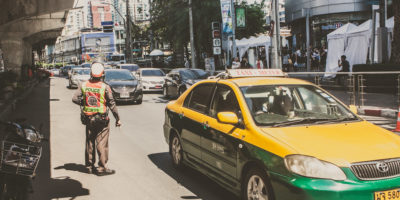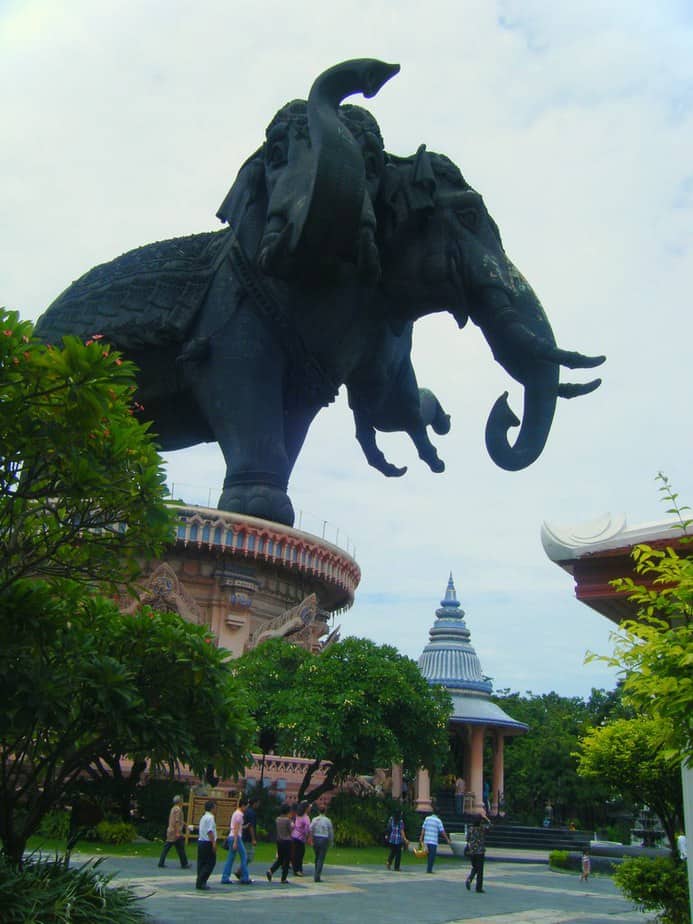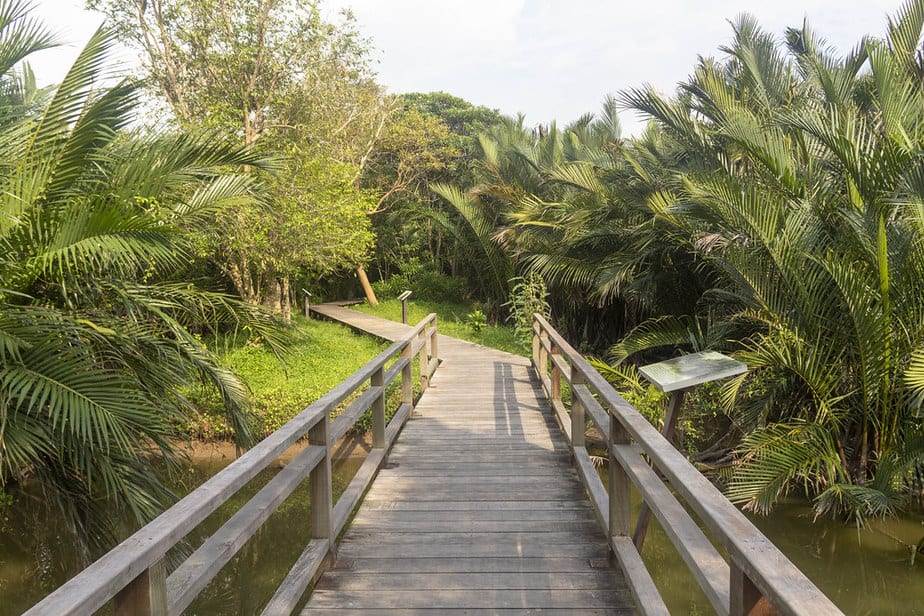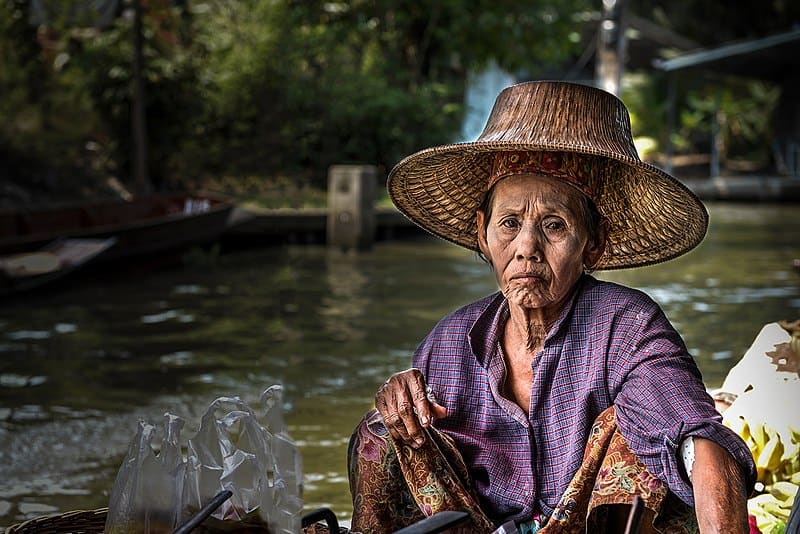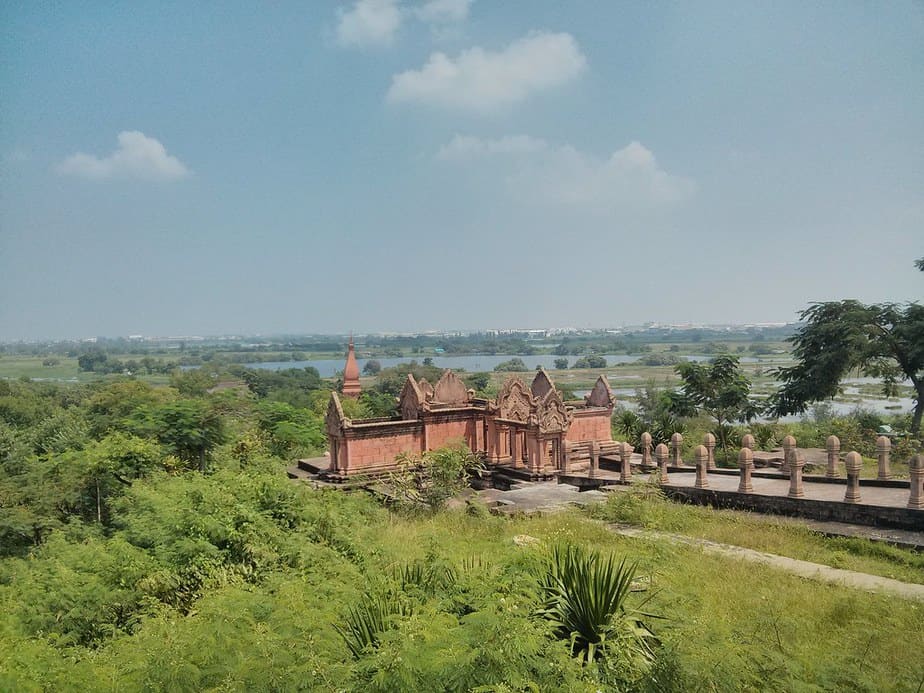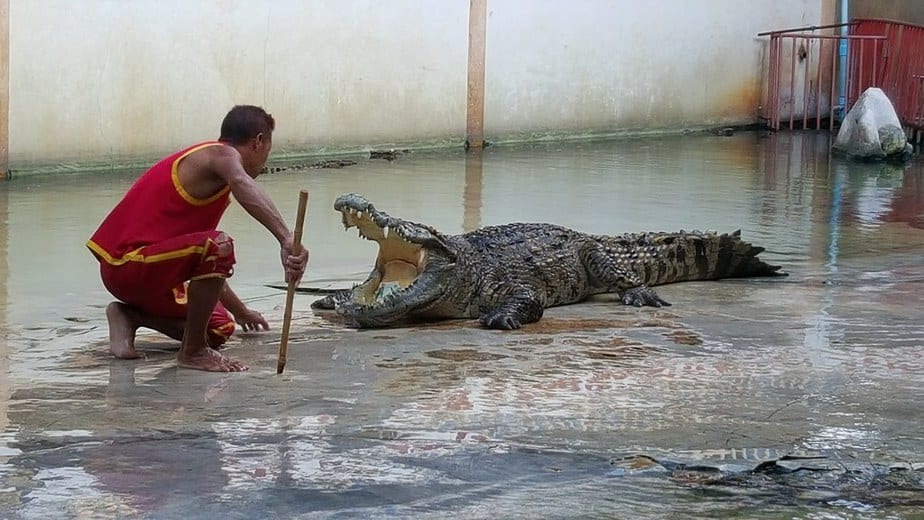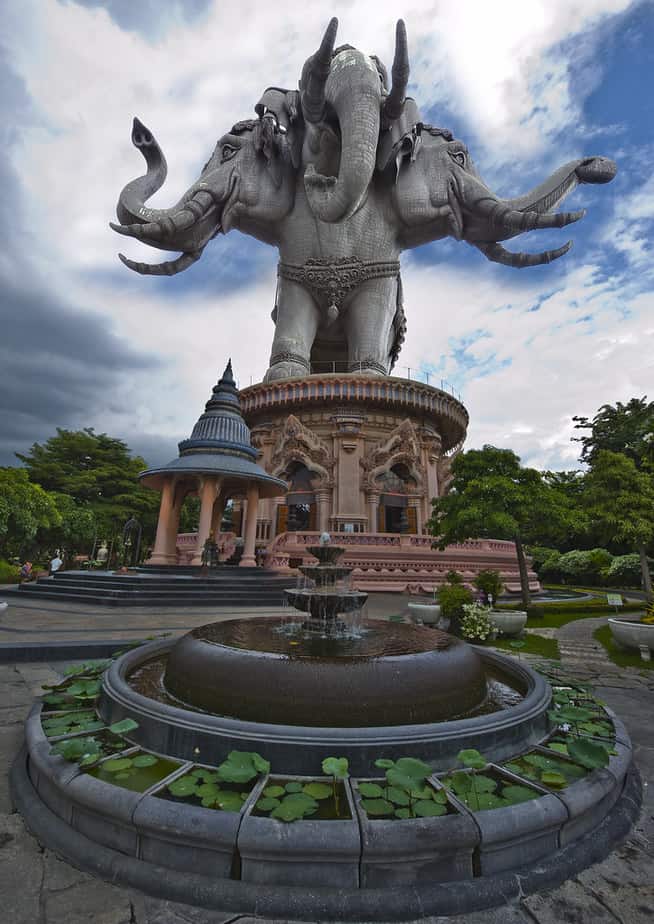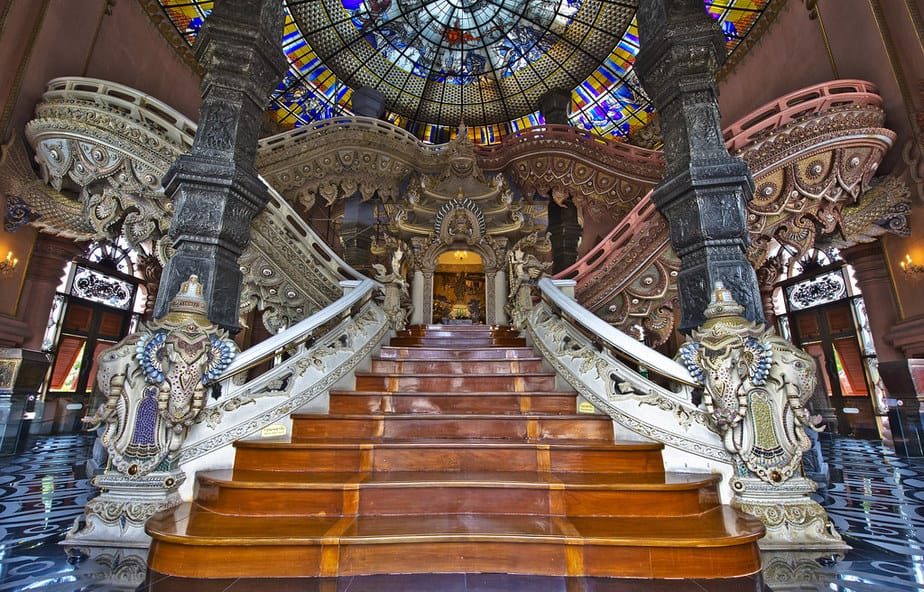A Brief Guide to Samut Prakan
Samut Prakan Province is just down the road from Bangkok, at the far end of the Chao Phraya River. Although it is regarded as a separate province, the northern and western borders of Samut Prakan actually join with the Metropolitan of Bangkok.
It is not necessarily what might normally be termed a tourist destination in Thailand as such, although there are various attractions and festivals around the province that are worth a visit.
The area doesn’t get much in terms of mass tourism like some regions of Bangkok, which in many ways adds to its appeal. It is known by locals as the ‘seaside in Bangkok’ for reasons which will be revealed, although don’t let that conjure up images of white sand and clear waters.
Samut Prakan is close enough to Bangkok for people to make the journey there, and the area is home to enough interesting attractions dotted around the region to warrant at least one day trip from Bangkok, if not a couple.
The province has become much more accessible in recent years now that the BTS sky train line runs all the way to the region by way of its Green Line. You can see from the list of BTS stops below that in Samut Prakan the line includes stops at the majority of stations that allow you to reach the attractions in the area, including ones featured in this post.
The BTS stations on the recently extended line that now stretches into Samut Prakan are as follows:
(E15) SAMRONG: Wat Bang Phli (Reclining Buddha) , Bang Phli Riverside Market
(E16) PU CHAO, (E17) CHANG ERAWAN: Erawan Museum
(E18) NAVY ACADEMY: Naval Museum
(E19) PAKNAM: Phra Samut Chedi and Fort , Khun Samut Chin
(E22) SAI LUAT: Crocodile Farm and Zoo
(E23) KHEHA: Crocodile Farm and Zoo, Wat Asokaram, Ancient City, Bang Pu Recreation Centre
The Kheha stop is now the last stop at the end of the line, although there may be plans for further extensions in the not too far-off future.
The region actually comprises six districts (amphurs), namely Amphur Mueang, Amphur Bang Bo, Amphur Bang Phli, Amphur Phra Pradaeng, Amphur Phra Samut Chedi, and Amphur Bang Sao Thong.
History
Samut Prakarn was first established between 1620 and1628, during Thailand’s Ayuttaya period. The original site for the city was on the western side of the river, which is today the location of the Phra Pradaeng district.
For many years it wasn’t much more than just a small fishing village with only a handful of bamboo huts and no real other facilities to speak of. But it occupied a key position at the mouth of the river, which eventually gave it more importance as time went on.
The position became especially prominent once the Thai capital was relocated to Bangkok in the 18th century.
For instance, all the ships coming up the river had to stop here first for customs checks once the area became a sea port for foreign trade ships that did business with Thailand. Once Bangkok had become the new capital, it was decided that the approach from the sea required additional fortification, which came by way of Wittayakom Fort, constructed on the left bank (and now Phra Pradaeng Nursing Home).
Amid growing conflicts with various surrounding nations including Vietnam, the King eventually decided to have Samut Prakarn re-located across the river to Paknam in order to provide further fortification to the area and offer more security against any impending sea attacks.
Today you can see much of this past in evidence along with many of the region’s landmarks that were installed at around this time, along with others that have sprung up since.
Notable Samut Prakan Attractions
1. Bang Pu Seaside
Bang Pu Seaside is hardly what you might expect from a regular beach in Thailand, as it is basically mudflats in the port that give the impression of a beach. It is actually a nice spot for both bird-watching and watching the sunset though, and there are even a couple of walks that you can go on along the coastline.
Even though a lot of the surrounding areas are industrial, from this spot you can get what at least seems like some decent air.
Migratory seagulls tend to inhabit this area in Thailand’s ‘winter’ season around October and November time. There are also a few restaurants and other local activities around the area. The World Wildlife has an educational centre focused on bird-watching and mangrove preservation.
The area is also known as Bang Pu Recreational Centre which, along with the Bang Pu seaside resort is actually owned by the army. The area is accessible to the general public and the bungalows along the front can even be rented. You can access the recreation centre from 10.00am until 8.00pm, and you can get there by songtaew from Kheha BTS if not coming by car .
2. Bang Kachao
Bang Kachao is an area in Samut Prakan’s Phra Pradaeng district often referred to as ‘Bangkok’s Green Lung’. It has various attractions of its own which largely center around its greenery and park-like, natural jungle surrounds which comprise various cycling tracks.
Needless to say, it is an area very popular for cyclists and other people from Bangkok looking to escape the thrall of the city and find some peace in a more natural setting. Bang Krachao is actually a man-made island in the Chao Phraya. You can reach it by crossing the river from the point of the Wat Klong Toey Nok Temple, and once you arrive on this ‘island’ you can soon forget that you are anywhere near to a capital city. Check out our previous post ‘Brief Guide to Bangkok’s Green Lung’ more insights on this area.
3. Bang Nam Phueng Floating Market
This market is actually located in Bang Kachao, and is a local-style market that reflects authentic community life. It sells lots of food, snacks, and other locally-made items and products. Tourists can rent a wooden boat or maybe a bicycle very cheaply, and both are great ways to see the community’s way of life and a real green zone that even puts some of Bangkok’s parks to shame.
This Floating Market isn’t actually on the water like many others in Thailand, but rather it is next to the canal. It is worth checking out though, for a touch of authenticity that is sadly lacking in anything close to a tourist area. It is held only on Saturday, Sunday and public holidays from 8.00am to 4.00pm.
4. Ancient City
Ancient City (Mueng Boran in Thai) is located 8 km away from the province’s central area in Bang Pu. It is an impressive, open park-type area that covers around 600 rai and contains replicas of significant places in the country’s past. The city was actually built around the end of 1963, although it has undergone various renovations since then.
Many of the highlights in the city include replicas of places and structures from the Sukothai and Ayyutaya periods, and reproduce places like Sanphet Prasat Palace, Phra Wihan Mountain, Phanom Rung Sanctuary, and Sukothai’s Wat Mahathat in , to name but a few.
The structures were built with the same specifications as the originals, although some are scaled down.
This site also serves as something of a centre of local art and culture and contains an old-style market providing refreshments. It is an ideal place for anyone interested n Thai history or culture, but is also a great day out for couples or families. There are lakes and views to be had, and bicycles can be rented to get around the park on, which is probably the best way aside from a golf cart tour.
The Ancient City is open daily between 9.00 a.m. to 7.00 p.m. Admission fees are not that cheap at around 700 baht for adults and 350 baht for children (inclusive of tram ride and bike ride), especially when considering that the Thai dual-pricing policy in full-effect here sees foreigners paying ten times more than locals!
5. The Crocodile Farm
The Crocodile Farm was established in 1950 as Thailand’s first crocodile farm, and is now apparently the largest in the world with over 60,000 crocodiles. It is located around 3 km from the centre of Samut Prakan, in Tambon Tai Ban.
The place is really more of a zoo than a farm, and does contain various other animals such as tigers, monkeys, turtles, snakes, birds, camels, hippos, and fish. There is even a Dinosaur Museum with life-size models and skeletons.
The farm holds daily shows that take place every hour, and feature crocodiles interacting with their handlers in various ways, and there is also an elephant show held daily every hour.
Unfortunately the crocodile farm has come under various criticism over the years for its questionable treatment of animals, especially the ones involved in the shows. This has in turn led to recommendations from various quarters to boycott the place. Just to add to that is the dual-pricing policy which is difficult to escape in Thailand, and is about 3 times higher for foreigners.
If you are OK with that, the farm is open between 7.00 am and 6.00 pm.
6. Erawan Museum
The Erawan theme crops up commonly in Thailand, and relates to images of the 3-headed Hindu deity Brahma, known as Phra Phrom in Thailand. If you are approaching Samut Prakan by road from Bangkok, the giant three-headed elephant is one of the first things you’ll see as you get close to the area.
This is the Erawan Museum, in the Amphoe Mueang district (Samrong sub-district) of Samut Prakan. The museum opens between 9.00am and 7.00pm, and comprises the world’s largest elephant image. The structure is around 50 metres high, and the five-storey museum inside contains various museum pieces. You can join a tour of the place every half an hour, starting in the base of the pedestal.
You can then make your way up right inside the belly of the elephant from which you can check out some impressive views of the surrounding area through a window.
The easiest way from Bangkok aside from getting a car or taxi (remember to use the Grab app) is to take the Skytrain to BTS Pu Chao station (Green Line). From there, you can take a less than 5-minutes motorcycle taxi, or a 10-minute walk.
Or you go to the next BTS stop Chang Erawan, from which you’ll have a slightly longer walk back, but you do get decent views of the elephant from the train.
If you are feeling super-adventurous you could try taking a bus — numbers. 25, 142, 365 and air-con bus 102, 507, 511, 536 go past the museum.
And yep, you guessed it – admission prices adhere to the dual-pricing once again but in this case you pay merely double what an earnest local does, and it is actually cheaper after 5pm.
7. Wat Bang Phli Yai Klang (Reclining Buddha)
Wat Bang Phli Yai Klang is one of the region’s historic temples that contains a reclining Buddha image. The temple was built in 1824, and its highlight is the image known locally as Somdet Phra Sakkayamuni Si Sumet Borphit. The impressive image is 53 metres long, which is even longer than the more famous one at Wat Pho, and its interior is divided into 4 levelss.
The 1st storey contains meditation ‘cells’ for the purpose of Dhamma practice, while the 2nd storey contains statues of 500 Buddhist arahants, along with paintings depicting hell and heaven chambers. The 3rd storey contains murals depicting various sacred Buddha images, and the 4th storey is home to Buddha relics Sri Lanka. This level is known as the Buddha image’s ‘heart room’ and is the place that people come to cover it with gold leaves for auspiciousness.
Although this is an impressive temple, it is one that goes under the radar of the majority of tourists. The interior section of the temple is open daily between 9.00 am and 3.00 pm, and the other sections open daily between 8.00 am and 5.00 pm. The nearest BTS station to the temple is Samrong, and the temple is located on the bank of Samrong canal near to the riverside market.
Planning a trip to Paris ? Get ready !
These are Amazon’s best-selling travel products that you may need for coming to Paris.
Bookstore
- The best travel book : Rick Steves – Paris 2023 – Learn more here
- Fodor’s Paris 2024 – Learn more here
Travel Gear
- Venture Pal Lightweight Backpack – Learn more here
- Samsonite Winfield 2 28″ Luggage – Learn more here
- Swig Savvy’s Stainless Steel Insulated Water Bottle – Learn more here
Check Amazon’s best-seller list for the most popular travel accessories. We sometimes read this list just to find out what new travel products people are buying.



